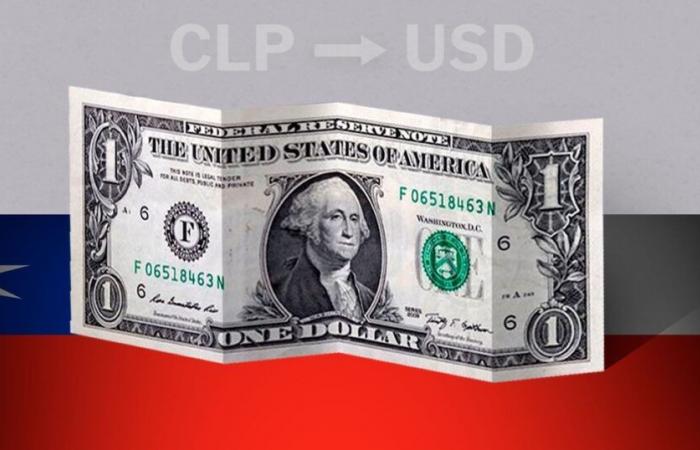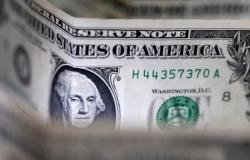In the last session the US dollar It was negotiated at the end of 940.57 Chilean pesos on averagewhich implied a 0.66% change if compared to the price of the previous day, when it stood at 946.78 pesos.
Taking into account the last week, the US dollar marks a drop 0.51% and for a year still accumulates a decrease in 0,03%.
With respect to past dates, he chained two sessions in a row in negative figures. In reference to the volatility of the last week, it presented a clearly lower performance to the volatility that the data of the last year reflected, so that we can say that it is going through a period of greater stability in recent days.
It is expected that Chile experience one Economic recovery in 2025with a growth of Commence Real projected at 2.2%, according to the Central Bank of Chile. This rebound follows a period of low growth in 2023 and 2024, affected by the hardening of monetary and fiscal policies that were implemented to control inflation during the Covid-19 pandemic.
While the inflation Decrease, the prices of fuels and food, which are maintained above their long -term trend, suggest that reductions in the reference rate must be prudent for this period.
On the other hand, although in the short term the perspective is positive, Chile could face long -term complications. Due to the low level of public and private capital accumulation, as well as limited productivity growth, future growth prospects are limited.
Despite the enthusiasm around Nearshoring, the direct foreign investment (FDI) is maintained below the registered levels more than a decade ago. The report indicates that for Chile to succeed in the long term, it must address structural challenges such as the cost of capital, the education of the workforce, energy and infrastructure policies, social instability and high tax rates to companies.
The inequality It is another persistent challenge in the country, although it has been slightly reduced, it remains high for the standards of the world Bank. The country has considered the introduction of a wealth tax on several occasions, but it has not yet been implemented. In this way, some aspects for the evolution of the economy will still be pending.
The Chilean weight is the legal tender of Chile since 1975, it takes up the use of the weight sign ($) and is regulated by the Central Bank of Chile, which controls the amount of money created.
The Chilean currency settled in 1817 after the independence of the country, but it was until 1851 that the decimal system was established in the Chilean weight, which is now constituted in 100 cents. As time has passed, the currency has changed, but is currently counted in entire pesos.
To date you can find coins of 5, 10, 50, 100 and 500 pesos, the latter was the first bimetallic currency produced in the country. In 2009 it was tried to make coins of 20 and 200 pesos, but the project was repudiated by Congress. Meanwhile, in 2017 it was approved that the 1 and 5 pesos coins be issued.
Likewise, in October 2018, the Chilean Central Bank announced that it would begin the circulation of the coins of 100 pesos created between 1981 and 2000, in order to reduce its coexistence with the current currencies, although they are still in force.
Regarding economic matters, Chile had a strong fiscal response in 2021, which allowed it to grow up to 11.7%, being one of the fastest recoveries in the world after Coronavirus pandemic. This situation is explained by the consumption driven by the retirement of the pension fund and direct fiscal support.
Despite this, recovery in the labor market has been slower and inflation has also affected Chile fed by strong demand pressures, increases in raw material prices, interruptions in supplies and weight depreciation, which finally led to the highest public debt in three decades (37%).






